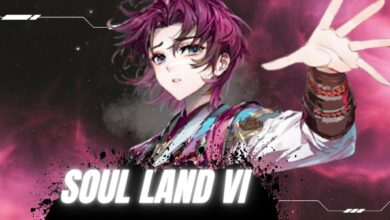Army Corps of Engineers to barge 36 million gallons of fresh water a day as saltwater intrusion threatens New Orleans-area drinking water

As saltwater intrusion from the Gulf of Mexico continues to endanger drinking water supply, the US Army Corps of Engineers plans to barge 36 million gallons of freshwater daily into the lower Mississippi River near New Orleans, officials said Friday.
The decision was made at a time when water levels are rapidly declining for the second year in a row as a result of the unprecedented drought that this summer’s scorching heat and scant rainfall caused in areas of the central US.
As water levels drop, the danger of saltwater interruption fills in Louisiana as seawater drives north into drinking water frameworks, unrestricted by the Mississippi’s typically powerful stream rate.
The Mississippi Waterway is conjectured to reach “memorable lows throughout the following half a month,” Louisiana Gov. John Bel Edwards said during a Friday news gathering.
To assist with moderating interruption, the state and the Military Corps of Designers are attempting to add 25 feet of level to a 1,500 extensive submerged levee in the Mississippi Stream, which was built in July to slow the saltwater’s movement, Armed force Col. Cullen Jones said.
The corps likewise plans to barge a large number of gallons of water every day to nearby water treatment offices, Jones said during the news meeting.
The corps reported the arrangement to construct the levee last year. It included digging silt from the lower part of the stream and heaping it up to make what’s known as a ledge, which goes about as a dam for the denser saltwater in the lower levels of the waterway.
Normally, enough precipitation upstream aids in easing dry season conditions and keeps the saltwater under control. In any case, during the news meeting Friday, the lead representative said authorities “don’t completely accept that there is adequate precipitation in the close to term anyplace along the Mississippi Waterway to improve the circumstances substantially.”
“Tragically, we simply haven’t had the help from the dry circumstances that we want thus that consideration is deteriorating,” Edwards said.
State to convey filtered water in mass to New Orleans
Jones said it would require roughly 24 days to add to the ledge. Once increased, it will postpone saltwater interruption by 10 to 15 days, he said.
Fifteen million gallons of new water is supposed to be gotten one week from now, Jones said, adding the region will require 36 million gallons each day to assist with alleviating the issue.
The water will be added to water at treatment focuses and make a blend that is ok for treatment, Jones added.
The lead representative likewise reported plans to convey filtered water in mass to the New Orleans region. New Orleans Chairman LaToya Cantrell marked a crisis statement for the city on Friday because of saltwater interruption.
The announcement permits city offices to plan and answer any effects and permits state and government organizations to convey assets on a case-by-case basis for a more smoothed-out process, the city said.
Saltwater:
Last week, Plaquemines Area President W. Keith Hinkley said at a news gathering that perfect water was being conveyed to around 2,000 inhabitants who were influenced by the saltwater interruption.
It was not important to purchase a lot of filtered water, Edwards said Friday.
“There isn’t a lack of filtered water around the state or the nation and our organizations will be ready to get water as the need might have arisen,” he said.
“Unfortunately, we just haven’t had the relief from dry conditions … so that (saltwater) intrusion is worsening, in the sense that it’s moving further up the river,” Edwards said.
The southeastern corner of the state, Plaquemines Parish, is already under a drinking water advisory due to high salt levels in the water. Bottled water is being distributed to residents.
Typically, the river’s flow is sufficient to prevent salt water from moving far upstream. But for the second year in a row, hot and dry weather has lowered the Mississippi River’s flow, allowing a denser, heavier layer of salt water from the gulf to force its way upstream.
The river is expected to hit historic lows in the next few weeks, Edwards said.
“Most of the state has been experiencing prolonged drought and above-average heat, and has presented several challenges including wildfires, drought, heat-related deaths, injuries and so forth and now saltwater intrusion,” Edwards said.
Officials are addressing the issue in multiple ways, including heightening an existing sill — an underwater levee used to block or slow the wedge of salt water — and bringing in 15 million gallons of fresh water for residents in impacted areas.




You always bring something new to the table. Bitcoin What Is Cryptocurrency
Hi! Do you know if they make any plugins to help
with Search Engine Optimization? I’m trying to get my blog
to rank for some targeted keywords but I’m not seeing
very good success. If you know of any please share.
Appreciate it! I saw similar blog here: Eco blankets
Good
I’m looking forward to more from you! Sports News
Learn about the MBBS Fees Structure in Karnataka for top-ranked colleges.
Get a clear picture of education expenses through MBBS Fees Structure in Karnataka.
Stay entertained anywhere with the feature-packed Raja Luck App.
Your point of view caught my eye and was very interesting. Thanks. I have a question for you.